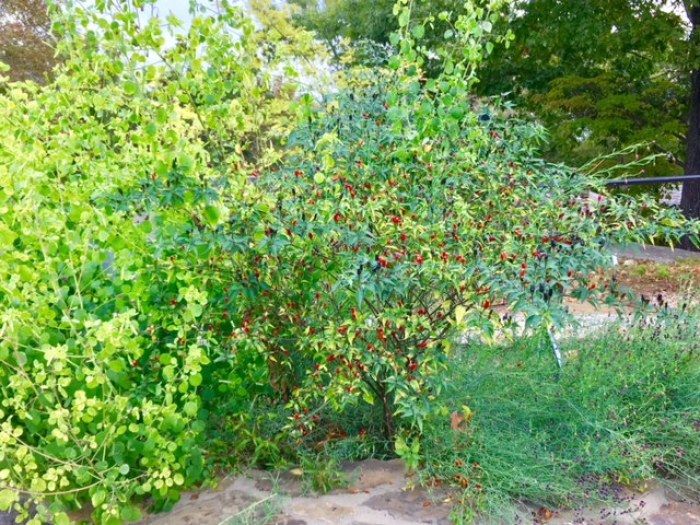
This year we are celebrating Cilantro & Coriander as Herb of the Year for 2017. This herb has a very distinct flavor-many love it-and there is a small minority who absolutely abhor it. The latter group finds it to taste horrid and it is not their fault… it is a genetic trait that is passed along and they just cannot help it that their bodies cannot tolerate the smell or taste of cilantro (about 4 to 5% of the world’s population!).
There are a number of plants that have many of the same chemical constituents as Coriandrum sativum and sort of mimic the flavor of this popular herb. These herbs are culantro, papaloquelite, pipicha and Vietnamese coriander, which I recently photographed in the herb of the year display garden at the Ozark Folk Center in Mountain View, Arkansas. Most of them grow well in hot climates and are therefore used as substitutes in places where cilantro plants cannot tolerate the heat and bolt when it gets too hot.
Some of the information included here is excerpted from The Culinary Herbal: Growing & Preserving 97 Flavorful Herbs by Susan Belsinger and Arthur O. Tucker,Timber Press 2016.
Culantro (Eryngium foetidum)
Culantro is a heat-tolerant substitute for cilantro; the fragrance and flavor of both are comparably close. In addition to heat tolerance, culantro retains its flavor rather well on drying, in contrast to the leaves of cilantro, which have the taste of tissue paper when dried. Only the straight species is available in most markets.
Growing basics
biennial to about 16 inches
cannot withstand frost
full sun
moist
friable garden loam; pH average 5.6
Cultivation and propagation
Culantro is easily cultivated in moist garden loam if started early inside and transplanted after spring frost. After spring-planted cilantro has ceased to produce leaves because of heat, culantro will continue to reward the gardener with its spiny leaves and spiny flowers.
Slugs and snails have a peculiar affinity for culantro and can become a major problem if preventive measures are not taken. Mealy bugs may also infest the tightly packed leaves and are virtually impossible to eliminate; discard the parent plant and resow the seeds when mature.
Harvesting and preserving
Culantro, like the other cilantro substitutes, is best used fresh. Storage at 50°F with packaging will extend the shelf-life of culantro to two weeks, compared with four days under ambient marketing conditions. Blanching quickly in hot water at 205°F prior to drying helps to preserve the green color.
Papaloquelite (Porophyllum ruderale subsp. macrocephalum)
Papaloquelite has been used in Mexico well before Columbus, as the equivalent today of cilantro (which is originally native to China). Branches of papaloquelite are still kept today in glasses of water on the tables in cafes and bars in Mexico, and the leaves are torn up fresh on beans or eaten with tortillas and garlic. The leaves impart a very strong, unique, cilantro-green pepper-cucumber flavor. Cilantro haters call this buzzard’s breath, but it really makes an authentic salsa, so just ignore them. Personally, I find it to be much stronger in fragrance and taste than cilantro with a lingering resinous taste in the palate. Despite its consumption for perhaps millennia in Latin America, papaloquelite has no GRAS status (probably because no one has petitioned FDA).
In South America the leaves of the normal subspecies (subsp. ruderale) are used in foods under the name quinquiña (Bolivia) or cravo de urubu (“black vulture’s marigold,” Brazil). Occasionally, Mexican markets and some herb nurseries in Texas and Mexico will also offer related species, such as P. coloratum or P. tagetoides (Mexican name pipicha); see below.
Growing basics
annual from 3 to 6 feet
very sensitive to frost
full sun
moist, not constantly wet
well-drained, garden loam
Cultivation and propagation
Each marigold-like plant may grow to 6 feet (1.8 m) high and provide plenty of foliage, but ray-less flowers are rarely produced in the northern areas before frost. If you grow this outside of southern Texas and Mexico, grow it in pots so that you gather the dandelion-like fruits with their tiny, bristly parachutes.
Harvesting and preserving
Harvest leaves of papaloquelite fresh as needed. Like cilantro, these just don’t retain their flavor well on drying. During harvest season, when the herb is ready at the same time as chiles and tomatoes, be sure to make preserve a batch or two of salsa and put it up in canning jars.
Pipicha (Porophyllum tagetoides; also found as Porophyllum linaria)
This native to Mexico is a showy and fragrant culinary herb. It is also referred to as Pipiche, Pepicha, and Chepiche
It is somewhat similar to Papaloquelite although not quite as smelly. It has narrow, linear leaves and the mature plant reaches about 2 to 4 feet in height and sometimes flops over. The flowers are small cups that are two-tone shades of purple. Plant with tall, upright plants which will hold it up or where it can spill over a rock wall or garden border. This flavorful herb is used like cilantro in Hispanic cooking. Plants cannot tolerate frost.
Growing basics
annual from 2 to 5 feet
very sensitive to frost
full sun/part shade
moist, not constantly wet
well-drained, garden loam
Harvesting and preserving
Harvest leaves of pepicha fresh as needed. During the growing season tips can be trimmed and will grow back. At the end of the season, cut it all the way back. While this herb can be dried and retain some of its flavor, it is better used fresh. During harvest season, when the herb is ready at the same time as chiles and tomatoes, be sure to make preserve a batch or two of salsa and put it up in canning jars.
Vietnamese coriander (Persicaria odorata)
Rau ram, often pronounced “zow-zam,” is widely sold in the United States as “Vietnamese coriander.” The odor is that of cilantro with a hint of lemon; the taste is similar though a bit more pungent and bitter. Rau ram is used by the Vietnamese to garnish meat dishes, especially fowl, and is also eaten with duck eggs. The herb is also an ingredient of a Vietnamese pickled dish resembling sauerkraut. Rau ram has no GRAS status despite millennia of use. Only the straight species is available.
Growing basics
herbaceous perennial to 6 inches
marginally hardy to zone 7
full sun
wet, standing water preferred
garden loam
Cultivation and propagation
If you cannot find rau ram plants from a nursery, simply root plants from an Asian grocery. Rau ram prefers mud and a film of standing water in full sun.
Harvesting and preserving
Harvest plants as needed. Rau ram does not dry well and is best used fresh.
Brown Marmorated Stink Bug (Halyomorpha halys; BMSB)
I would be remiss here if I did not mention stink bugs. Unfortunately these shield-shaped insects were accidentally introduced into the U.S. in 1998 from their native China, Japan and Korea and are now an invasive pest to farmers.
Stink bug refers to the scent glands which are on the dorsal surface of the abdomen and on the underside of the thorax. The brown marmorated stink bug has a very similar odor to that of cilantro, only much stronger; more intense and fetid. If ingested, they are quite crunchy and taste very much like a strong and resinous version of cilantro–only the flavor penetrates the palate and stays with a person for a few hours–I found it to be a most unpleasant experience.
I have enjoyed growing and getting to know some of these plants from around the globe that mimic or are similar to cilantro in aroma and taste, though I must admit that I prefer Coriandrum sativum, with culantro being a second runner up.
Fine Gardening Recommended Products

Chapin International 10509 Upside-Down Trigger Sprayer
Fine Gardening receives a commission for items purchased through links on this site, including Amazon Associates and other affiliate advertising programs.

Razor-Back Potato/Refuse Hook
Fine Gardening receives a commission for items purchased through links on this site, including Amazon Associates and other affiliate advertising programs.


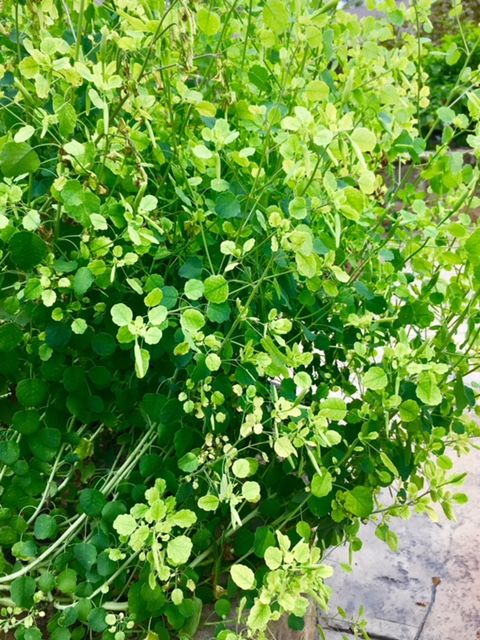
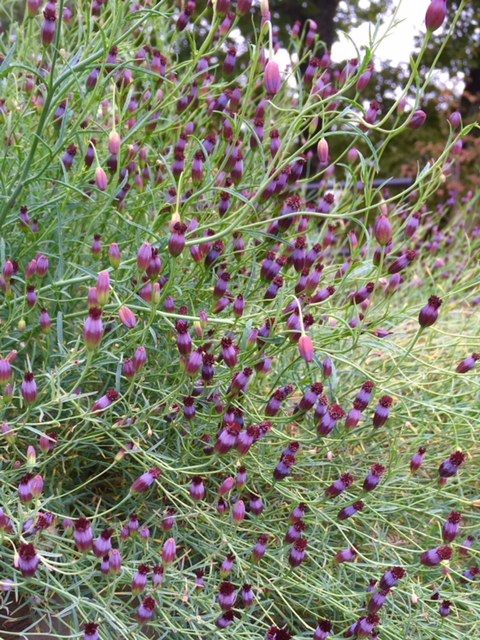

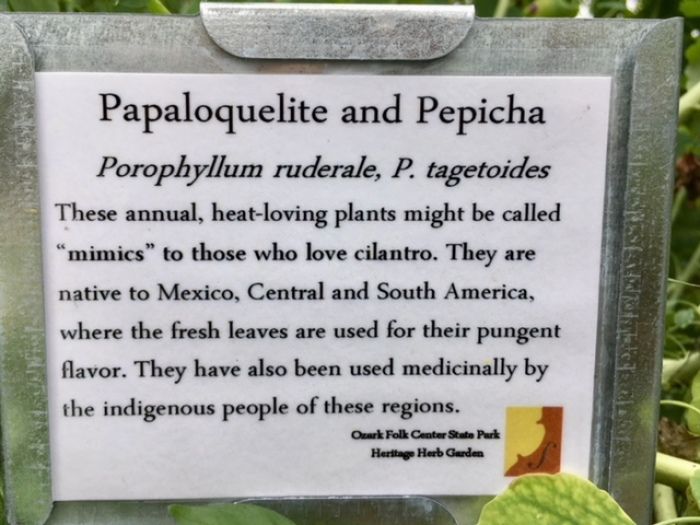

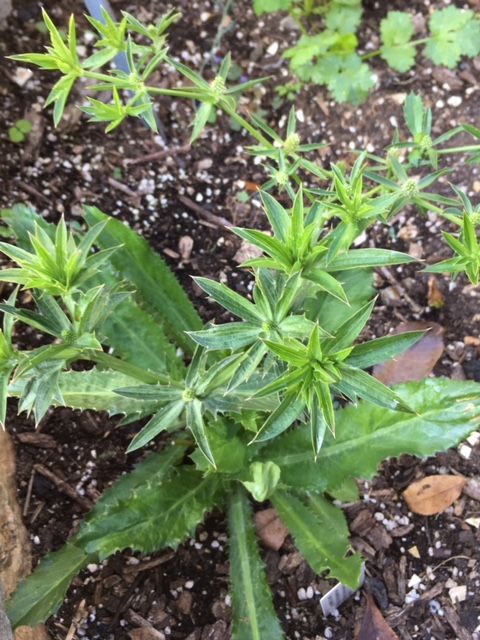
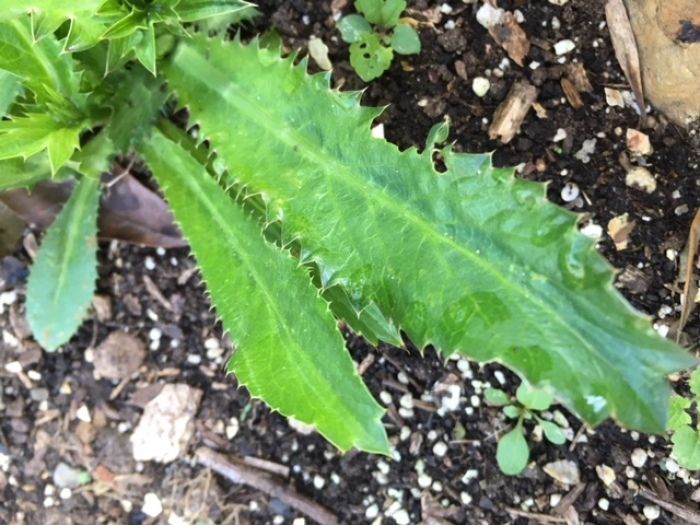
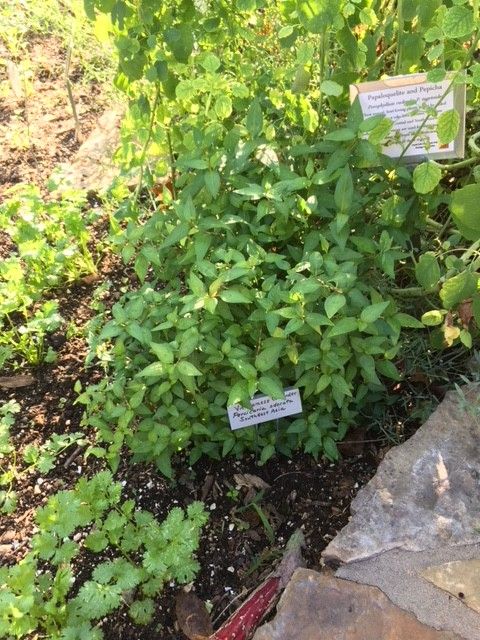

















Comments
Cilantro & Coriander is also my personally favorite herb and I really admire its outstanding appearance and distinguishable flavor of this herb. I have also visited http://www.essaywriting.net.nz site to write my papers easily about this herb. I am unable to understand why some individuals abhor it.
Check this google and get everything you need.
Log in or create an account to post a comment.
Sign up Log in